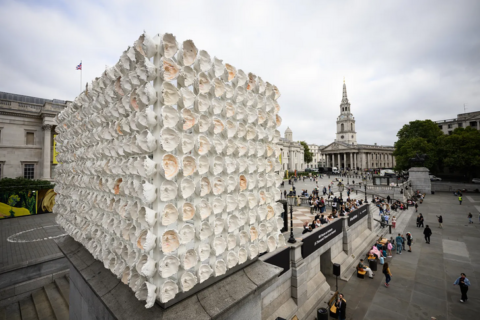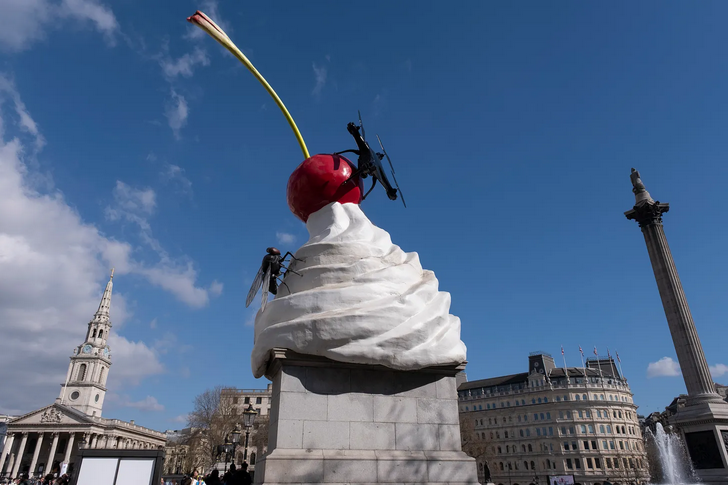Most of Andrew Doyle’s latest column is behind the paywall, but I found myself nodding along to the first portion about the descent of modern art:
The works on display at New York’s Museum of Modern Art (MOMA) have been curated with care. On my recent visit I began on the fifth floor, where you can admire art from the 1880s until the 1940s. On the fourth floor you will find works from the 1950s to the 1970s, and then two floors below are the collections from the 1980s until the present day. I wonder whether this arrangement is deliberate; the literal descent of the visitor from one floor to the next reflecting the figurative descent of artistic quality through the century.
And so while on the upper floor you can admire the melting clocks of Salvador Dalí’s most famous and haunting work, The Persistence of Memory (1931), and René Magritte’s The Lovers (1928), a curious meditation on romanticised desire, by the time you reach the second floor there are some cuddly toys glued together into clumps which are dangling from the ceiling. I didn’t bother to check who was responsible for this nonsense.
I have often tried to defend some of the more intriguing efforts at modern conceptual art, but I also recognise that we must be able to admit when art is simply bad. I felt the same when I saw the most recent sculpture to grace the fourth plinth in Trafalgar Square. It is a piece by Mexican artist Teresa Margolles entitled Mil Veces un Instante. It consists of over seven-hundred death masks of trans, non-binary and gender non-conforming people arranged into a cuboid. The faces are meant to represent those who have been the victims of violence, including the artist’s friend Karla who was murdered in Juárez in December 2015.
I don’t doubt the sincerity of the passion behind the project, or how the tragedy of this death informed the vision of the piece, but as a work of art it is banal. Like many conceptual pieces inspired by voguish identity politics, it is propagandistic and uninspiring. The Pink News has claimed that those who dislike the piece are “bigots”. I would say they simply have good taste.
I suppose it is an improvement on Heather Phillipson’s godawful “The End”, a sculpture of a dollop of whipped cream with a cherry, a drone and a fly on the top which was finally taken down from the fourth plinth in 2022. I doubt that anyone except the artist and her close family members were disappointed to see it gone. While I understand the subjectivity of such matters, surely we should be aspiring to higher standards when it comes to art in public spaces?







I’ve taken a little heat on IGram, but also gotten a fistful of ‘likes’ for pitching a flameball or two at the worship of the garbage that passes for contemporary art. I’ve watched video clips of museum curatrors treating the crap that that kid Basquiat produced as if they were holy relics. The stuff is painfully ugly. I’ve seen better work on gas station toilet stalls. Then there is Twombly who scribbles like a three year old. “Oh! How deep!” This stuff sells for millions of dollars. Who buys it is always something of a mystery. What is truly remarkable to me is the number of posters who gush over this stuff, claiming it is wonderful!, moving!, inspirational! as if they have some magical abitity to see something that eludes the ordinary mortal. Emperor’s New Clothing and all. The serious side of all this is that it devalues talent, skill, and the pursuit of excellence. It tells us that beauty has no value, hard work is unneeded, and the pursuit of excellence is a fool’s errand.
JWM
Comment by jwm — September 27, 2024 @ 10:05
My working theory is that a lot of it is just like Hunter Biden’s “masterpieces” … it’s an elaborate form of money laundering. I’ve been friends with working artists over the years and while I sometimes looked askance at some of the artwork they acquired from other artists (most artists seem to do a lot of barter for their work), they actually were trying to produce things that real people would buy. The stuff that gets the slobbering praise from the “critics”? Most of it I wouldn’t take if you paid me.
Comment by Nicholas — September 27, 2024 @ 11:05
Getting one’s art mounted on the Fourth Plinth is probably more of an artist’s “brand building” exercise than anything else. It can be the impetus to add the artist’s works to the long list of items that can be bought and sold for big money laundering, er, art appreciation, bucks.
Comment by Dutch — September 28, 2024 @ 20:30
Agreed, the fourth plinth may well function as one of the official signals that someone’s work is now “acceptable” in whatever dimension art “critics” (and grant endowying organizations) currently operate in. It’s not the only one, but it’s probably the most visible one.
Comment by Nicholas — September 28, 2024 @ 21:10